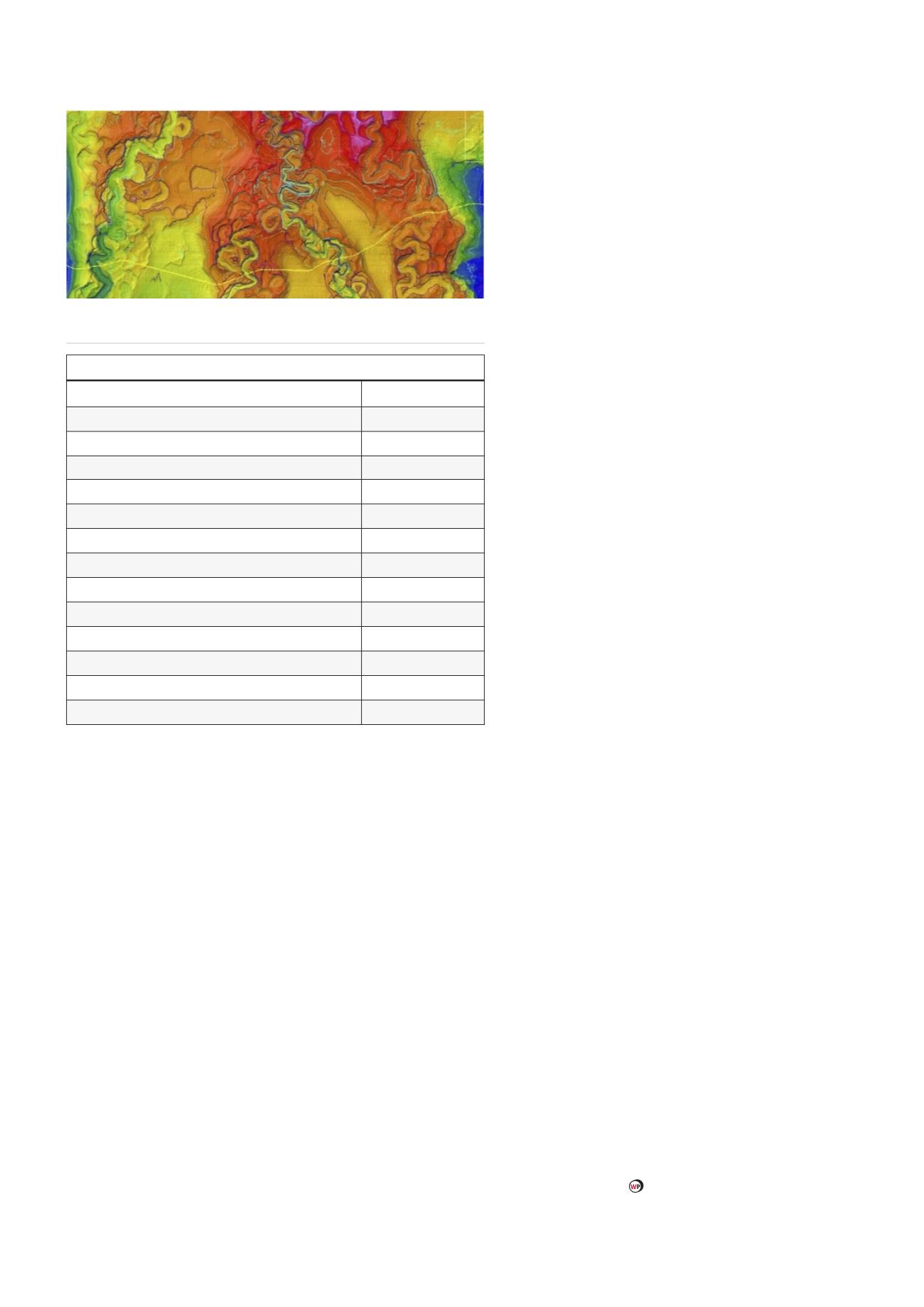
The identified geohazards will be studied in detail during
subsequent phases of the project; however, the unusual nature
of the fault crossing at the OFZ and crossing of the deep Indus
Fan channels prompted SAGE to undertake early geohazard
studies on these features, to confirm the viability of MEIDP
crossing them.
Owen Fracture Zone
The OFZ is a large fault system over 800 km long at the tectonic
plate boundary between India and the Arabian plates. At the
MEIDP route crossing point the OFZ takes the form of a strike-
slip right lateral fault. The fault forms a canyon 200 m deep and
1.3 km wide in a water depth of 3400 m.
The pipeline route resulting from the RMS has been used
to undertake a bottom roughness assessment of the pipeline
at the OFZ crossing. This analysis determined the stress state
and spanning condition of the pipeline. The assessment shows
that the defined route is suitable with no major requirement for
intervention.
The OFZ in the region of the MEIDP route has significant
seismic activity. SAGE seismic hazard studies indicated that
earthquakes of magnitude Mw
>
7.0 were possible and could
result in large seafloor movements. In order to understand the
possible implications of large strike-slip right lateral seabed
movements at the OFZ, SAGE has performed pipe stress
assessments on the 3D seabed with a forced 7 m movement
along the line of the fault, approximately equivalent to
1000 years of accumulated movement in one event. The
assessment showed that the current routing of MEIDP could
accommodate this movement without overstressing the
pipeline, and with only a small increase in pipeline spanning
condition.
The Indus Fan
The meandering channel/levee systems of the main Indus
Fan region generally run north to south, and are flanked by
deep sea basins to their east and west. These channel/levee
systems are characterised by central channels, adjacent
stepped terraces, and abandoned loops. The abandoned
loops are partially filled by sediments spilling over from the
active channels. The abandoned channel loops and terraces
associated with the active channels can be clearly seen
in Figure 7. Water depths as MEIDP crosses the Indus Fan
range from 2140 m at its shallowest point, to 3200 m at its
deepest.
The pipeline route crossing crosses five turbidity current
channels. These channels are up to 200 m deep and have
side slopes of up to 25˚.
The pipeline route defined during the RMS has been
used to perform an initial bottom roughness assessment
(stress state and spanning condition) of the Indus Fan. The
assessments show that an acceptable route across the Indus
Fan can be achieved. However, significant spans of up to 6 m
height may be present.
Project schedule
The project goal is to achieve first gas in 2027, to coincide
with the expected growing shortfall in India’s natural gas
needs and the tightening of the LNG market. The project can
be executed in six years if brought on fast track with active
government support, since substantial preparatory work has
already been undertaken and continues. Pipeline construction
will occur over a two year period.
Summary
The body of work performed by Peritus International and others
for SAGE has proved the technical feasibility of the MEIDP
project. This has been formally confirmed by DNV GL issuing a
statement of feasibility. The feasibility has also been confirmed
by Engineer India Limited (EIL).
The technology to undertake the design, manufacture the
linepipe, and lay deepwater pipeline is now operational. Mills
in India, Japan, Europe and China are both capable and keen to
supply the high-quality linepipe required for MEIDP.
SAGE believes that the technology and commerciality of
the MEIDP project is proved and is ready to invest in a detailed
marine survey and offshore and onshore FEEDs, which will cost
approximately US$60 million. However, as with all transnational
gas pipelines, the MEIDP project needs strong diplomatic and
political support from the associated governments before it can
move to the next phase.
Figure 7.
Indus Fan abandoned loops and channel terraces along MEIDP
route.
Table 2. Project schedule
Event
Date
Award reconnaissance and metocean surveys
February 2020
Commence reconnaissance survey (for deviation)
April 2020
Commence metocean survey
April 2020
Award onshore and offshore FEED
January 2020
Award detailed surveys
April 2020
Final investment decision
December 2021
Award linepipe contract
December 2021
Award onshore and offshore EPIC
June 2022
Start offshore construction
October 2023
Start compressor station construction
April 2024
Complete offshore construction
April 2026
Complete compressor station construction
June 2026
First gas
December 2026
28
World Pipelines
/
MARCH 2020








